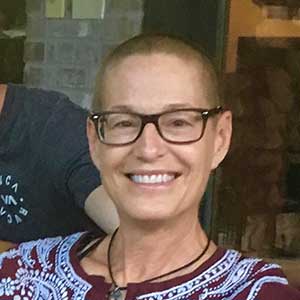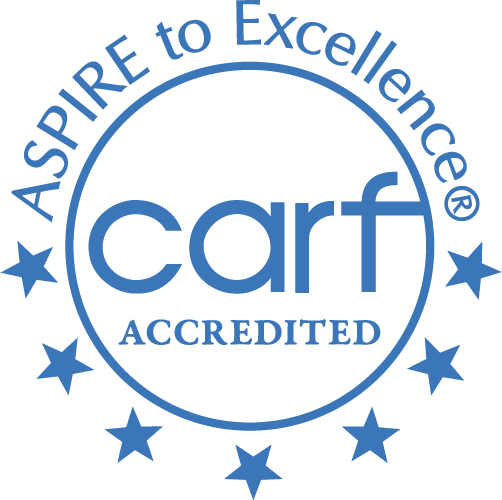Skip To Rehab Listing
Treatment Facility Settings and Recovery Approaches
Celina's many rehab programs, some of which are listed below, address an issue that is widespread in cities in every part of the United States: substance abuse. These facilities combat this problem locally by providing locations and resources that are convenient for patients within the area. These settings include: long term rehabs, outpatient counseling, inpatient addiction treatment programs, short term drug and alcohol rehab facilities, inpatient detoxification programs.
Drug and alcohol rehabs adopt a number of approaches, ranging from long-established approaches to recently developed methods such as: cognitive/behavior therapy, anger management, motivational interviewing, substance abuse counseling approach, trauma-related counseling, relapse prevention. The outcome is a variety of programs that clear the path to achievable sustained recovery for numerous clients.
Special Programs for Addiction Offered by Treatment Centers
Individuals struggling with drug or alcohol addiction generally require individualized support to break free from addiction. That is why alcohol and drug rehab programs in Celina provide special programs that help clients within their individual circumstances. Some of these services are listed here: clients referred from the court/judicial system, persons with eating disorders, co-occurring mental and substance abuse disorders, persons with post-traumatic stress disorder, self-help groups, treatment for spanish-speaking clients.
Rehab Payment Options in Celina, Ohio
Patients encounter diverse financial situations, which is the reason addiction treatment centers provide several payment choices, such as: private pay, private health insurance, military insurance, sliding fee scale, state education funds, state welfare or child and family services funds.
Payment should not have to be a barrier to substance abuse recovery. Rehab programs direct clients toward the financing opportunities that support their individual financial concerns.
With a range of facilities, programs, services, methods and payment options, Celina provides patients several alternatives when it comes to seeking recovery from addiction.
Commonly Asked Questions about Addiction and Treatment
How do I stop enabling an addict?
"Helping someone stop enabling an addict can be a challenging process, as the enabler often has deeply ingrained habits and patterns that need to be addressed. Here are some steps to consider:
Recognize Enabling Behavior: First, you need to identify the behaviors that are enabling the addiction. Enabling behaviors can include things like providing money that funds the addiction, covering for the addict's mistakes or responsibilities, or continually forgiving harmful behavior without setting boundaries.
Educate Yourself: Learn about addiction and its dynamics. Understanding that addiction is a disease and not merely a matter of willpower can help change your perspective and reactions.
Set Boundaries: Establish and communicate clear, firm boundaries regarding what you will and won't accept. Stick to these boundaries even if it's difficult.
Stop Rescuing: Refrain from protecting the person from the consequences of their addictive behavior. It is important for them to experience the full impact of their actions.
Encourage Treatment: Instead of protecting the person from their addiction, encourage them to seek professional help. Offer to assist in finding treatment options or attending support groups.
Seek Support: Enabling patterns can be tough to break. Seek help from therapy, counseling, or support groups like Al-Anon. These resources can provide you with tools and strategies to stop enabling.
Practice Self-Care: Ensure you're taking care of your own physical and emotional health. It's easy to get so wrapped up in the addicted person's problems that you neglect your own needs.
Maintain Consistency: It's essential to be consistent with your new approach. If you occasionally slip back into enabling behaviors, the person with the addiction may continue to expect it.
Be Patient: Changing long-standing patterns of behavior takes time, both for you and the person with the addiction. Remember to be patient with yourself and with them.
Remember, You're Not to Blame: Addiction is a complex disease influenced by many factors. It's important to remember that you're not responsible for the other person's addiction or recovery. Your role is to support in healthy ways, not to cure the addiction.
Are there drug abuse rehabs specifically for the lgbtq+ population?
Yes, there are substance abuse rehabilitation facilities that cater specifically to the LGBTQ+ (lesbian, gay, bisexual, transgender, queer, and others) community. These specialized treatment centers recognize the unique challenges and stressors that LGBTQ+ individuals may face, which can contribute to and complicate recovery from substance use disorders.
These specialized LGBTQ+ rehabs offer a variety of services, including:
- Inclusive and Affirming Environment: These facilities provide a safe, non-judgmental space where LGBTQ+ individuals can feel understood, accepted, and supported in their identity.
- Culturally Competent Staff: Staff at LGBTQ+ rehabs are trained in cultural competence, which means they understand and respect the unique experiences, perspectives, and needs of LGBTQ+ individuals.
- Tailored Treatment Plans: Substance use treatment is most effective when it addresses the specific needs of the individual. LGBTQ+ rehabs take into account factors such as sexual orientation, gender identity, experiences with discrimination or trauma, and other elements of a person's identity when creating a personalized treatment plan.
- Therapy and Counseling: These rehabs offer therapy and counseling that addresses issues common in the LGBTQ+ community, such as coming out, coping with discrimination or stigma, and navigating family or relationship challenges.
- Community Support: Being part of a supportive community can be particularly beneficial for LGBTQ+ individuals in recovery. These rehabs often offer group therapy, support groups, and other community-building activities with other LGBTQ+ individuals in treatment.
- Comprehensive Care: LGBTQ+ rehabs recognize that substance use disorders often co-occur with other mental health issues, such as depression or anxiety, and offer integrated treatment for co-occurring disorders.
- Aftercare and Support: These facilities often provide aftercare services and resources to support individuals in maintaining their recovery after they leave treatment, such as referrals to LGBTQ+ friendly therapists or support groups.
It's worth noting that while some individuals may prefer a LGBTQ+-specific rehab, others may feel comfortable in a more general rehab facility that offers LGBTQ+-inclusive services and staff training. The best choice depends on the individual's personal preferences and needs.
What is the 12 step method for treating addiction?
"The 12-step method for treating addiction is a structured, peer-based approach that originated with Alcoholics Anonymous (AA) in the 1930s. Since then, it has been adapted for various other substance use disorders and behavioral addictions, including Narcotics Anonymous (NA), Gamblers Anonymous (GA), and Overeaters Anonymous (OA), among others. The method is based on a set of guiding principles, known as the 12 steps, that outline a path to recovery, personal growth, and spiritual development.
The 12 steps of the method are as follows:
- Admitting powerlessness over the addiction and recognizing that one's life has become unmanageable.
- Believing that a higher power (interpreted by each individual according to their beliefs) can restore sanity and provide support in recovery.
- Deciding to turn one's will and life over to the care of the higher power.
- Conducting a thorough and honest moral inventory of oneself.
- Admitting to oneself, the higher power, and another person the exact nature of one's wrongs and shortcomings.
- Being ready to have the higher power remove these defects of character.
- Humbly asking the higher power to remove one's shortcomings.
- Making a list of all the people harmed by one's addiction and being willing to make amends to them.
- Making direct amends to those harmed, whenever possible, except when doing so would cause harm to them or others.
- Continuing to take personal inventory and promptly admitting when one is wrong.
- Seeking to improve one's conscious contact with the higher power through prayer and meditation, asking for knowledge of the higher power's will and the strength to carry it out.
- Having experienced a spiritual awakening as a result of these steps, carrying the message to others struggling with addiction and practicing these principles in all aspects of life.
The 12-step method emphasizes the importance of peer support, mutual aid, and the sharing of personal experiences as a means of overcoming addiction. Participants typically attend regular meetings, where they share their stories, listen to others, and work through the steps at their own pace. Many 12-step programs also encourage members to find a sponsor, an experienced member who has worked through the steps and can provide guidance, support, and accountability during the recovery process."













